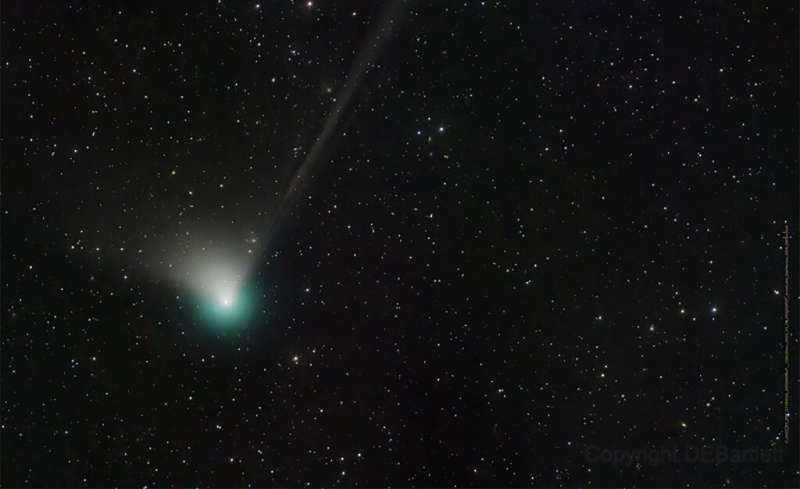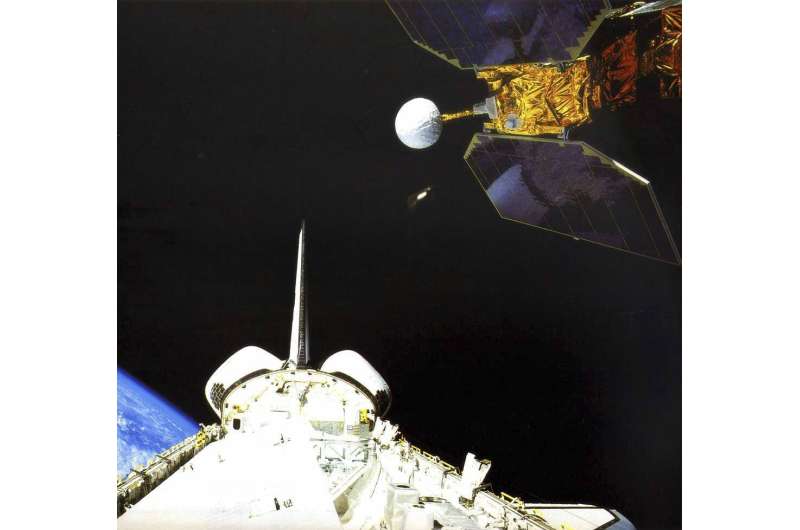
Copernical Team
SpaceX Transporter-6 successfully launched Europe's first solar sail mission
 Kongsberg NanoAvionics (NanoAvionics) has announced the successful launch of Europe's first solar sail mission aboard SpaceX Transporter-6. The 6U nanosatellite nicknamed 'Alpha' was manufactured for France's Gama. It is one of four satellites, built by the Lithuanian smallsat mission integrator for multiple customers, that got sent into low Earth Orbit.
It is the first time for NanoAvioni
Kongsberg NanoAvionics (NanoAvionics) has announced the successful launch of Europe's first solar sail mission aboard SpaceX Transporter-6. The 6U nanosatellite nicknamed 'Alpha' was manufactured for France's Gama. It is one of four satellites, built by the Lithuanian smallsat mission integrator for multiple customers, that got sent into low Earth Orbit.
It is the first time for NanoAvioni Bullitt selects Skylo for its newly announced smartphones and two-way messaging service
 Skylo, a Non-Terrestrial Network (NTN) operator, focused on connecting anything, anywhere, announced that it is partnering with Bullitt Group, the innovative British smartphone manufacturer, as Bullitt's satellite connectivity partner for its two-way satellite messaging smartphone.
Available in Q1 2023, and on show for the first time at CES 2023, the smartphone will feature Bullitt's new m
Skylo, a Non-Terrestrial Network (NTN) operator, focused on connecting anything, anywhere, announced that it is partnering with Bullitt Group, the innovative British smartphone manufacturer, as Bullitt's satellite connectivity partner for its two-way satellite messaging smartphone.
Available in Q1 2023, and on show for the first time at CES 2023, the smartphone will feature Bullitt's new m ROCK Robotic announces ROCK Base, a 1,400-channel triple-frequency RTK base station
 ROCK Robotic announced the availability of ROCK Base, a state-of-the-art, triple-band multi-constellation RTK/GNSS base station. ROCK has also joined the Web3 GEODNET initiative, the world's largest decentralized GNSS reference network.
The combined solution will support critical applications in civil surveying, high-definition mapping and digital twin creation, as well as many next-genera
ROCK Robotic announced the availability of ROCK Base, a state-of-the-art, triple-band multi-constellation RTK/GNSS base station. ROCK has also joined the Web3 GEODNET initiative, the world's largest decentralized GNSS reference network.
The combined solution will support critical applications in civil surveying, high-definition mapping and digital twin creation, as well as many next-genera Retired NASA satellite expected to fall to Earth on Sunday
 A retired NASA satellite is expected to fall to Earth on Sunday after spending nearly 40 years in space, space officials said Friday.
The U.S. Defense Department has predicted that the 5,400-pound Earth Radiation Budget Satellite will reenter the atmosphere sometime within a 17-hour window of 6:40 p.m. EST on Sunday, NASA said in a statement.
The satellite is expected to mostly b
A retired NASA satellite is expected to fall to Earth on Sunday after spending nearly 40 years in space, space officials said Friday.
The U.S. Defense Department has predicted that the 5,400-pound Earth Radiation Budget Satellite will reenter the atmosphere sometime within a 17-hour window of 6:40 p.m. EST on Sunday, NASA said in a statement.
The satellite is expected to mostly b Scientists eager to analyze International Space Station experiments soon
 NASA is preparing for the return of multiple science experiments from the International Space Station in the hopes they might further aid mankind's future exploration of space.
A Dragon spacecraft that docked with the station on Nov. 27 is scheduled to return to Earth and splash down off the eastern coast of Florida on Jan. 9, NASA said in a press release.
The items being ferried
NASA is preparing for the return of multiple science experiments from the International Space Station in the hopes they might further aid mankind's future exploration of space.
A Dragon spacecraft that docked with the station on Nov. 27 is scheduled to return to Earth and splash down off the eastern coast of Florida on Jan. 9, NASA said in a press release.
The items being ferried Once in 50,000-year comet may be visible to the naked eye

A newly discovered comet could be visible to the naked eye as it shoots past Earth and the Sun in the coming weeks for the first time in 50,000 years, astronomers have said.
The comet is called C/2022 E3 (ZTF) after the Zwicky Transient Facility, which first spotted it passing Jupiter in March last year.
After traveling from the icy reaches of our Solar System it will come closest to the Sun on January 12 and pass nearest to Earth on February 1.
It will be easy to spot with a good pair of binoculars and likely even with the naked eye, provided the sky is not too illuminated by city lights or the Moon.
The comet "will be brightest when it is closest to the Earth", Thomas Prince, a physics professor at the California Institute of Technology who works at the Zwicky Transient Facility, told AFP.
Old NASA satellite falling from sky this weekend, low threat

Stellantis to build electric aircraft with Archer and provide strategic funding for growth
 Stellantis N.V. (NYSE / MTA / Euronext Paris: STLA) and Archer Aviation Inc. (NYSE: ACHR) have agreed to significantly expand their partnership by joining forces to manufacture Archer's flagship electric vertical take-off and landing (eVTOL) aircraft, Midnight.
Stellantis will work with Archer to stand up Archer's recently announced manufacturing facility in Covington, Georgia at which the
Stellantis N.V. (NYSE / MTA / Euronext Paris: STLA) and Archer Aviation Inc. (NYSE: ACHR) have agreed to significantly expand their partnership by joining forces to manufacture Archer's flagship electric vertical take-off and landing (eVTOL) aircraft, Midnight.
Stellantis will work with Archer to stand up Archer's recently announced manufacturing facility in Covington, Georgia at which the Black carbon aerosols accelerate loss of glacial mass over the Tibetan plateau
 Black carbon aerosols are produced by the incomplete combustion of fossil fuels and biomass, and are characterized by strong light absorption. Black carbon deposition in snow/ice reduces the albedo of snow/ice surfaces, which may accelerate the melting of glaciers and snow cover, thus changing the hydrological process and water resources in the region.
The South Asia region adjacent to the
Black carbon aerosols are produced by the incomplete combustion of fossil fuels and biomass, and are characterized by strong light absorption. Black carbon deposition in snow/ice reduces the albedo of snow/ice surfaces, which may accelerate the melting of glaciers and snow cover, thus changing the hydrological process and water resources in the region.
The South Asia region adjacent to the Deadly Ukraine strike reveals Russian tech weakness
 Russia has blamed the deaths of scores of its soldiers in a New Year missile strike on its troops using unsecured, traceable mobile phones on the battlefield.
But if Ukrainian forces did use geolocation of phones to target its strikes, it also reveals the Russian army's operational carelessness in the field, say analysts.
"It is already obvious that the main reason for what has happened
Russia has blamed the deaths of scores of its soldiers in a New Year missile strike on its troops using unsecured, traceable mobile phones on the battlefield.
But if Ukrainian forces did use geolocation of phones to target its strikes, it also reveals the Russian army's operational carelessness in the field, say analysts.
"It is already obvious that the main reason for what has happened 
